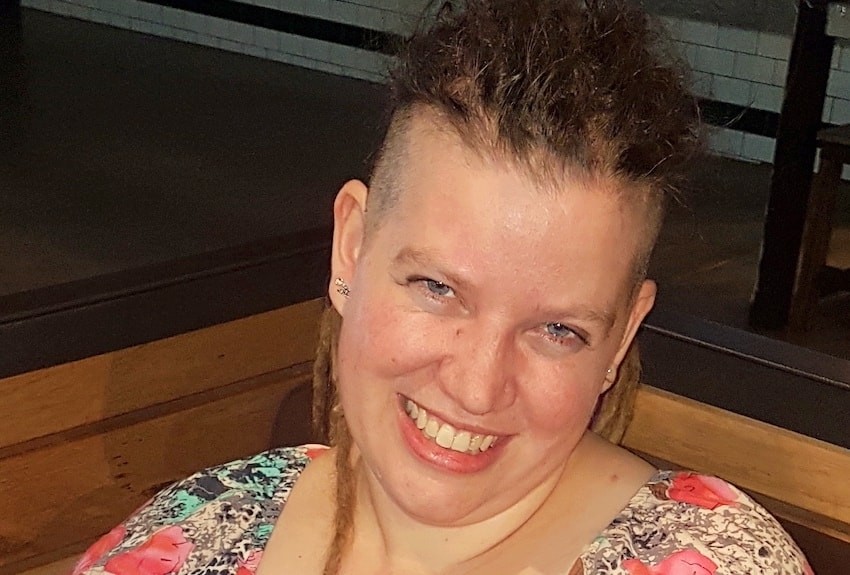The SANE Blog
Nine things you need to know before watching Split
Imagine watching a film about the mental illness you’ve just been diagnosed with. Now imagine that film paints a picture of violence and danger. It suggests people with your condition are a terrifying threat to society.
How would this shape your perception of the illness? How would it make you feel about yourself? And if your friends, family, children or boss watch the film and think people with your condition are ‘psychopaths’, who would you turn to for help?
This is what many people with Dissociative Identity Disorder (DID) or Other Specified Dissociative Disorder are facing right now, following the release of Split. The film depicts a person living with multiplicity* (having two or more distinct identities) as a violent kidnapper. It’s yet another film that distorts and dramatises people’s real experiences to make a sensational story.
‘Everybody can have a dark side or something about them they’re afraid of. That doesn’t mean that people with multiplicity have a serial killer or axe murderer inside,’ says Sarah, who was diagnosed with DID years ago but now identifies as multiple.
‘This film suggests we’re the ones to be scared of when people with dissociation actually have much more to fear. This is because the stigma about them is so intense.’
Angry and disappointed that Split feeds these harmful myths, Sarah shares her thoughts about living with multiplicity and what you don’t see in movies.
- Multiplicity is surprisingly common, and very diverse. I know that some people suffer a great deal while others live well. Some have many identities and others only two. Some experience a lot of amnesia and others very little or none.
- People live with multiplicity in many different ways. Some integrate to one personality. Others function best as a group that cooperates together. Living with multiplicity doesn’t necessarily mean we’re disordered, just different.
- People with this condition are vastly over-represented in horror films and as serial killers. Kidnapping and violence by people with mental illness is no more common than with anyone else. In films, switching between identities is usually portrayed as very obvious and, often, quite scary. For most people it’s subtle and hidden. I believe we need stories about multiplicity that reflect our diversity and don’t feed this fear, making people frightened of the condition and themselves.
- We can all relate to multiplicity in some way. We know what it’s like when part of us wants to go out and part of us wants to stay home. We can all struggle with our inner child. People with multiplicity experience this literally rather than metaphorically. It’s different, but I don’t think it’s so different we can’t relate.
- People often respond to multiplicity in three ways – fear, fascination and disbelief. These reactions can do real harm, especially when they come from people who are making decisions about whether we’re a good parent, partner or employee.
- If we’re open, we’re often told we’re freaks or faking it. If we try to keep our multiplicity hidden, we’re isolated. We don’t have many advocates to challenge myths and help people understand.
- People with multiplicity are still human. We still brush our teeth, fall in love and get parking fines.
- We need support, not stigma. Many of us have experienced trauma and being frightened that people will find out we’re multiple builds on this. It can be very lonely to be the only person you know with these experiences.
- We can change this. In the space of one generation I’ve seen a radical shift in how trans people are treated – from profound universal discrimination to the creation of wider acceptance, safe spaces and some legal support. One day I hope we’ll be seen as more than just the scary bad guy in films, and we need everyone’s help to make that happen.
You can read more on Sarah's blog.
*People prefer various terms such as dissociated identities or plural. We’ve used multiplicity in this article as it’s Sarah’s preferred term.
Related: Busting the myths about dissociative identity disorder
SANE provides a range of free telephone and online support services for people over 18 years of age with complex mental health needs and their family, friends and carers. We offer different types and levels of support so you can find what works for you. Choose from counselling, peer support, online groups and events, 24/7 community forums, and online information and resources. Learn more at sane.org/get-support.
When you subscribe to the blog, we will send you an e-mail when there are new updates on the site so you wouldn't miss them.
